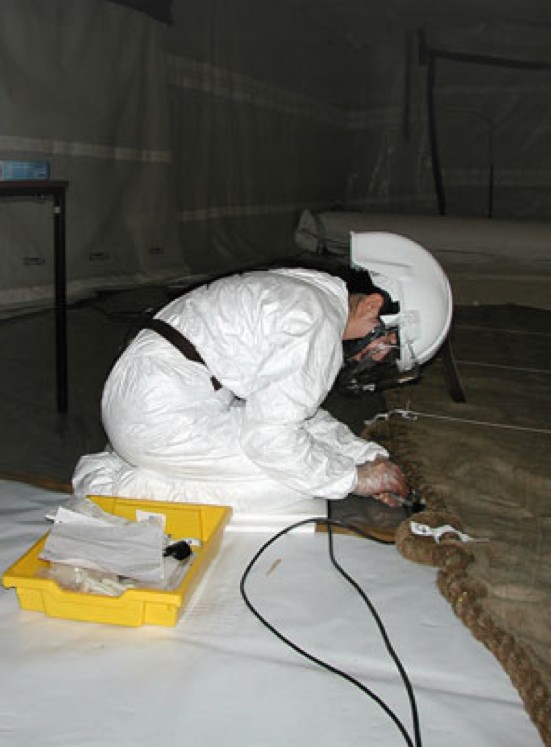The last surviving fore topsail from HMS Victory
Description
Approximately 24m long and 16 m wide the sail comprises lengths of hand stitched linen canvas edged with bolt ropes.
Client brief/Role of object
Remove loose soils; prepare sail for temporary flat storage in an environmentally controlled space.
Condition before treatment
Extensive holing thought to be as a result of musket and cannon fire during the Battle of Trafalgar. A long gash through the linen thought to be caused by the mast of HMS Victory as it smashed to the deck. Significant ageing through natural causes in the intervening 200 years.
Treatment
Surface cleaned using low-powered vacuum suction in combination with soft brushes and statically charged cloths to remove particulate soiling.
Condition after treatment
A considerable amount of potentially harmful acidic loose soils was removed. The sail is supported on a raised vented floor platform which allows air to circulate freely across the sail’s surfaces.
Further information
Gill, K. and Garside, P. 2006. 'The H.M.S. Victory fore topsail.' In: Nutgens, F. and Jordan, M. (eds.) Big Issues. London, UK, The Institute of Conservation (Icon), 36-46.
[TCC 1573]
Acknowledgements
Images by kind permission of the Commanding Officer of HMS Victory, Lt Cdr D J ‘Oscar’ Whild RN and the Textile Conservation Centre (TCC), University of Southampton. Textile Conservation Centre, University of Southampton © 2009.
Kate Gill, TCC Project Manager
Treatment completed October 2003



